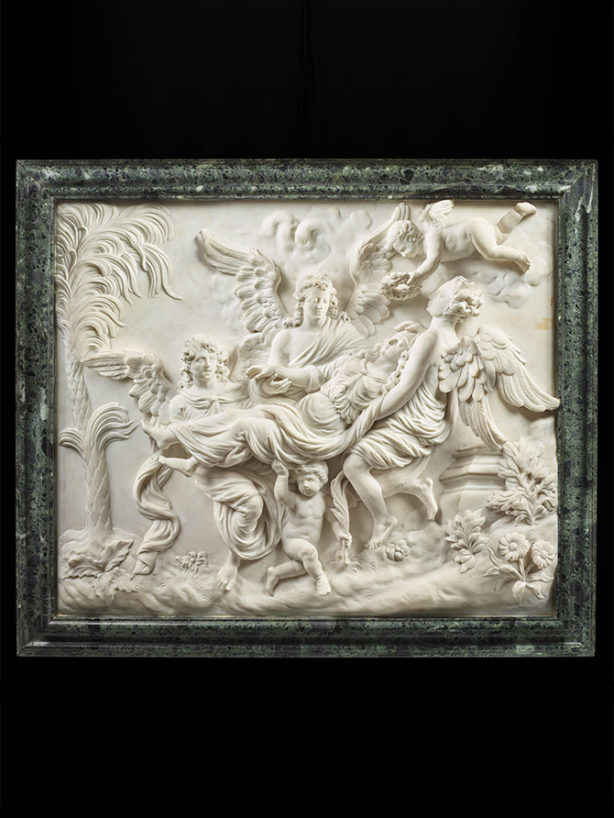Saint Catherine carried by angels at Mount Sinaï
Saint Catherine was born at the end of the 3rd century into a family issued from the nobility in Alexandria. Her father, king Costus, provided her with a refined education, and at a young age, she displayed brilliant philosophical dispositions. Her refusal to disavow her Christian faith and marry the Emperor forced her into martyrdom. Upon her death, angels removed her body and carried it to her sepulcher on Mount Sinai.
From Flanders to Italy, the cult of Saint Catherine is of great importance either as the mystical bride of Christ or for the miracle of the translation of her body by the angels. In our relief, she is wearing a crown reminiscent of her title of princess of Alexandria; a small angel offers her a crown of roses, symbol of holiness, while another holds the palm indicative of martyrdom. Lastly, the palm tree framing the composition to the left evokes Egyptian landscapes while the tomb is depicted to the right.
The stylistic proximity of our marble relief with the art of Nicolas Mignard (1606-1668), an academician painter born in Troyes, who spent the majority of his career between Aix and Avignon, and the work of Jean Daret (1613-1668), a painter born in Brussels who moved to Aix-en-Provence, as well as the production of Pierre Pavillon (1612-1670), sculptor and architect born in Paris who lived in Rome and established himself in Provence, is tied to the fact that the South of France is an important artistic center during the second half of the 17th century. It is a requisite journey for artists who want to travel to Italy, and Provence is also an active and opulently artistic area. Hôtels particuliers, urban retreats for high society in Aix, municipal palaces, châteaux are found throughout the countryside, and numerous churches, chapels and basilicas are countless sources of commissions for artists.
The sculptor of our bas-relief knew as much about the fashionable art at the court of France as he did about Provençal stylistic tropisms. The work may be tied to the corpus of Pierre Pavillon, renowned for his late mannerism softened by his imitation of the antique. A dominant figure in Aix and its surroundings between 1660 and 1670, he received numerous commissions and collaborated with Jean Daret. In its composition as well as its execution, our relief is a brilliant example of the dialogue between the arts that took place in France during the second half of the 17th century.




